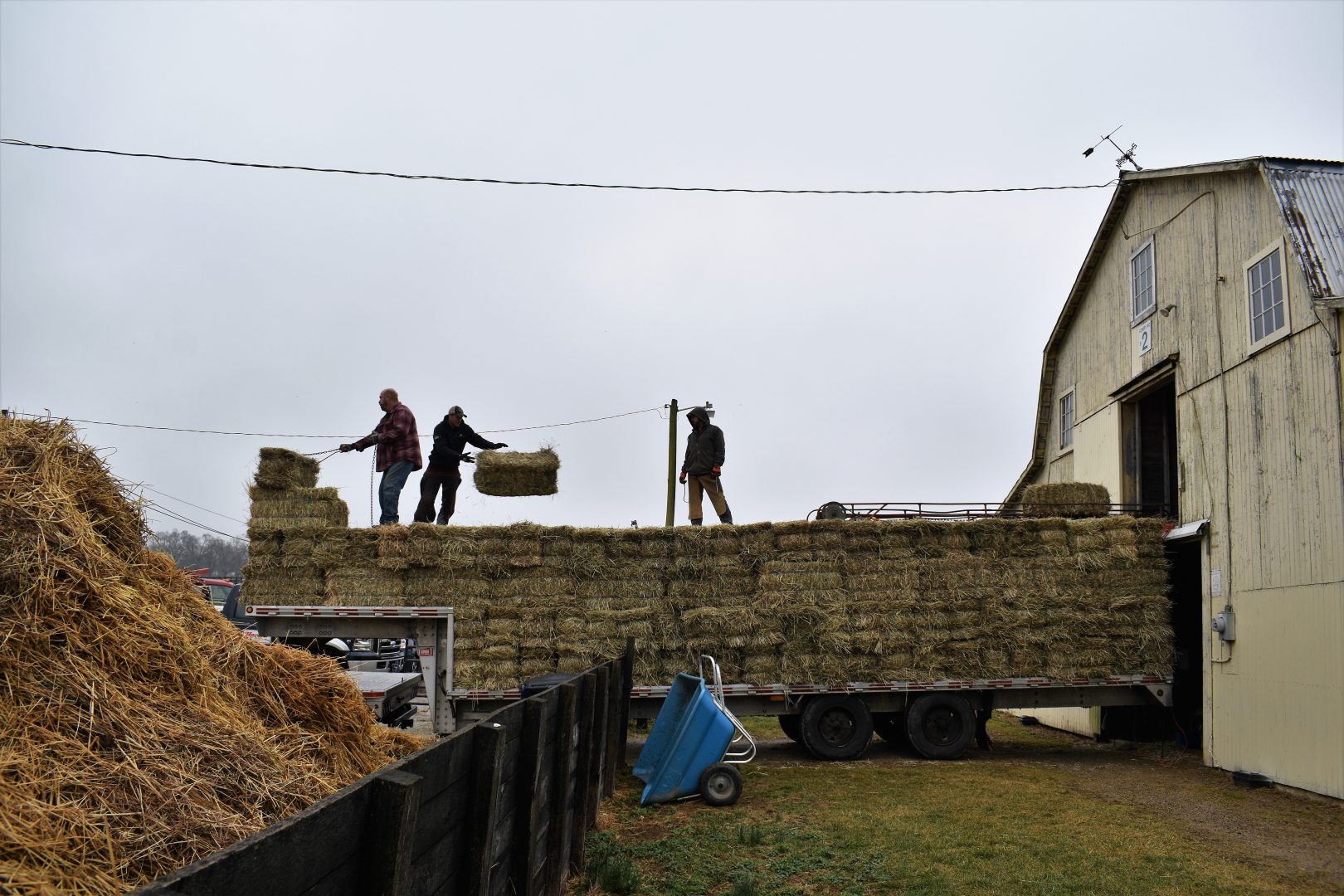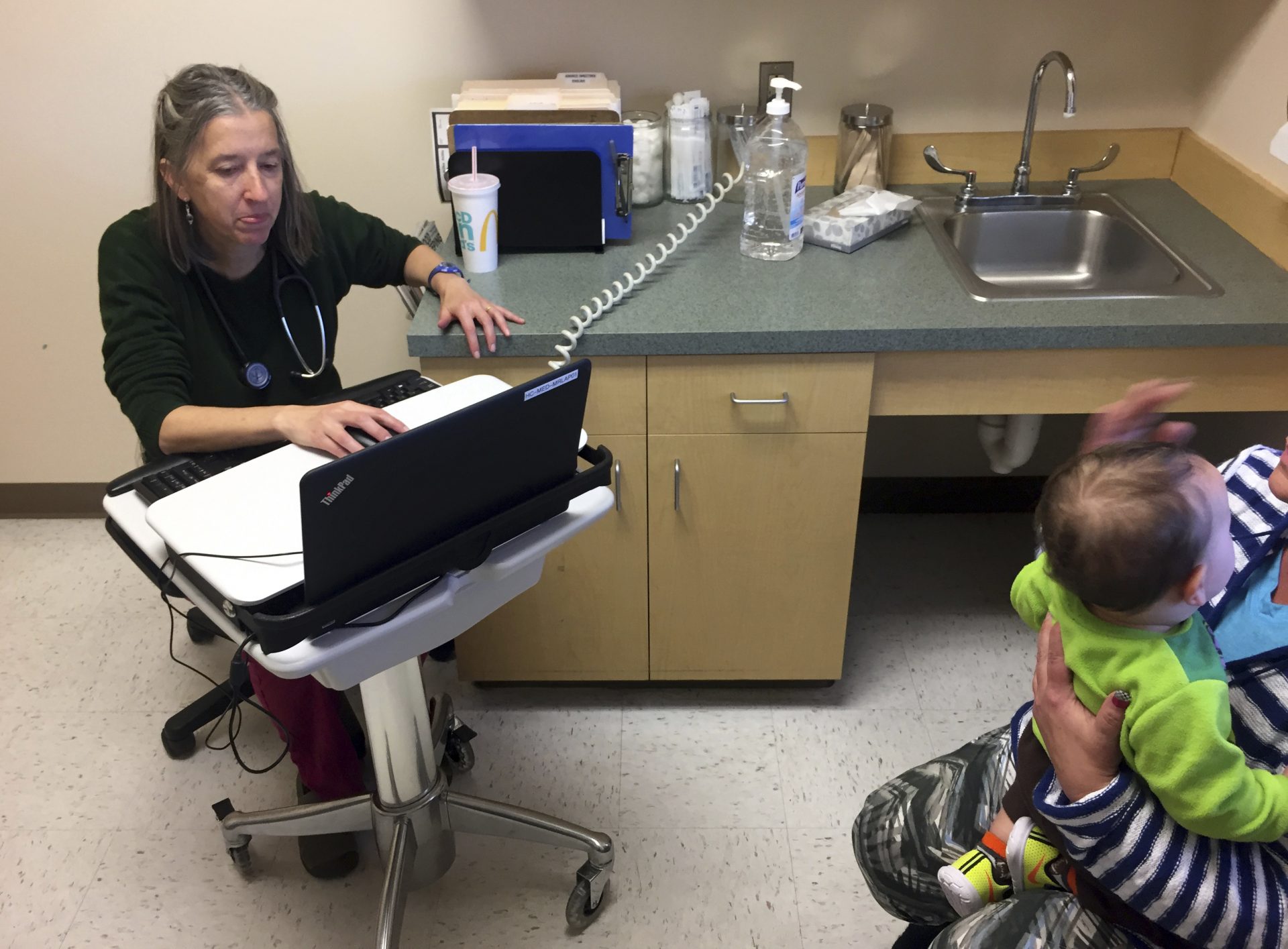
Workers unload hay at Hanover Shoe Farms in Adams County on Feb. 11, 2020.
Ed Mahon / PA Post

Workers unload hay at Hanover Shoe Farms in Adams County on Feb. 11, 2020.
Ed Mahon / PA Post

Ed Mahon / PA Post
Workers unload hay at Hanover Shoe Farms in Adams County on Feb. 11, 2020.
What you should know
» Coronavirus facts & FAQ
» Map: Confirmed cases in the U.S. and around the world
» How to prepare your home for coronavirus
(Kansas City) — Remote rural towns are a good place to be early in a pandemic, as they tend to be more spread out, which potentially means fewer chances to catch a bug. Remote rural areas are also, by definition, way removed from major seaports, airports and often even big highways. So it generally takes longer for new viruses to show up in tiny towns, like Fredonia, Kan.
“I always say it’s a hundred miles from anywhere,” says Cassie Edson, with the Wilson County Health Department. “It’s a hundred miles from Wichita, a hundred miles to Joplin, a hundred miles to Tulsa.”
Health Department Director Destany Wheeler says all the miles of farm fields between Fredonia and the next big town are a plus, for now.
“It gives us a little bit more time to prepare and to, to educate people on, especially social distancing,” she says.
Epidemiologists recommend social distancing or staying a few feet away from anyone who might have the coronavirus. That’s easier in spacious little towns with no mass transit, long lines or dense crowds.
“I think it’s accurate that where you have more individuals, you increase the likelihood of transmission of infections,” says Allison Aiello, a professor of social epidemiology at the University of North Carolina.
That said, rural communities are not permanently shielded from the spread of the coronavirus.
“I think it’s just a matter of time,” says Andy Pekosz, a professor of molecular microbiology and immunology at Johns Hopkins University’s Bloomberg School of Public Health.
Most remote rural towns don’t get many outside visitors, but the people who live in them drive to larger cities all the time. They go for everything from medical treatment, to work, to a night on the town. And Pekosz says that unless containment efforts succeed beyond his expectations, those people are going to be increasingly likely to be exposed to the coronavirus on those trips.
“As case numbers increase, then, there’s more of a likelihood of people moving from those urban areas to all sorts of other parts of the country,” Pekosz says. “And so therefore the rest is really going to increase exponentially.”
It’s a scenario that has played out before. Alex Navarro, a medical historian at the University of Michigan, says Spanish flu swept the entire U.S. in 1918, except for a few notable exceptions, including Gunnison, Colo.
“You have the story of a town that literally barricaded the roads and forced everyone who did come into town into quarantine,” Navarro says.
In fact, all of Gunnison County sealed itself off from the outside world for four months. And it worked. At the height of the Spanish flu pandemic, Gunnison recorded just two cases, both in isolation.
Navarro says people keep asking him if a remote little town could pull off the same trick today.
“It’s a very highly qualified maybe. I mean, I think there’s probably no doubt that it can work if it’s done properly,” Navarro says. “You have to do it really early. You have to do it as strictly as possible, and it has to be, it has to last long enough for community transmission outside of that area to, to end.”

Morgan Lee / AP Photo
FILE PHOTO: In this Dec. 21, 2016 photo, family physician Leslie Hayes attends to a 31-year-old mother (right, partially obscured) who is being treated for an addiction to heroin with the anti-craving medication Subutext, at the El Centro Family Health medical clinic in Espanola, N.M. Hayes credits her ability to effectively treat opioid addiction disorders to a training and mentoring program known as Project ECHO that is being tapped by federal officials for possible broader applications.
It turned out that even the four-month shutdown in Gunnison wasn’t long enough. More than 100 people got sick and several died when the city finally lifted its barricades.
In Fredonia, Kan., Wheeler has masks and other supplies stockpiled. She has plans at the ready, and she fears that when the coronavirus does come to town, the local outbreak may be devastating.
Like most rural communities, the population of Wilson County skews older than the national average. Wheeler says folks here are also more inclined to smoking and more likely to have chronic health issues, putting a higher percentage of the community at risk for life-threatening cases of COVID-19, the disease caused by the new coronavirus.
Fredonia is fortunate enough to have a hospital in town, but it’s small, with only 25 beds, though it has one ventilator.
Edson says a serious outbreak could quickly overwhelm the local health system.
“If enough people need more hospitalization, well they’ll have to go elsewhere and [that’s] a fact. It’ll be challenging to everybody,” Edson says.
Because that treatment could be hours away, in a busy, crowded city.

A collection of interviews, photos, and music videos, featuring local musicians who have stopped by the WITF performance studio to share a little discussion and sound. Produced by WITF’s Joe Ulrich.
The days of journalism’s one-way street of simply producing stories for the public have long been over. Now, it’s time to find better ways to interact with you and ensure we meet your high standards of what a credible media organization should be.